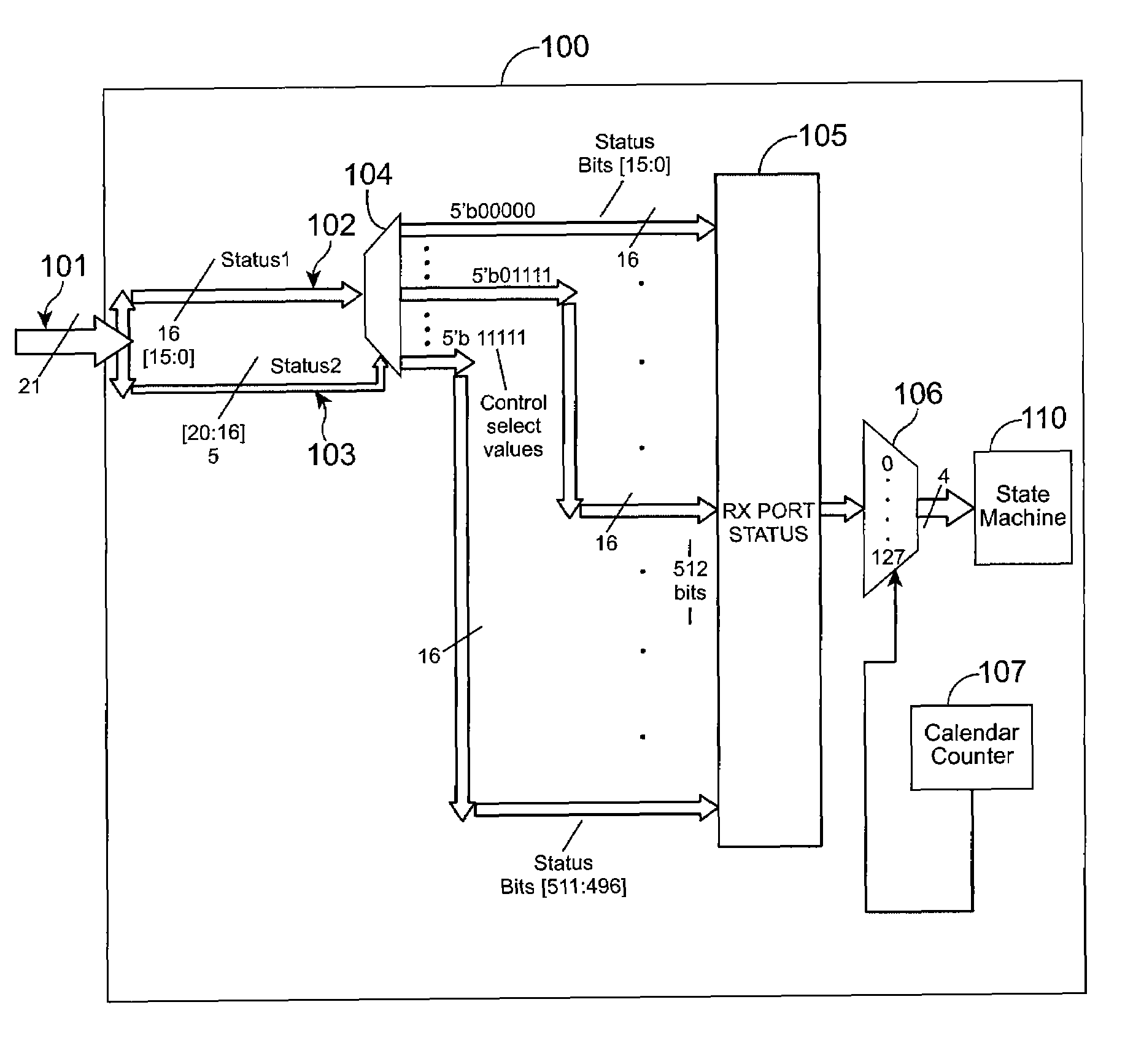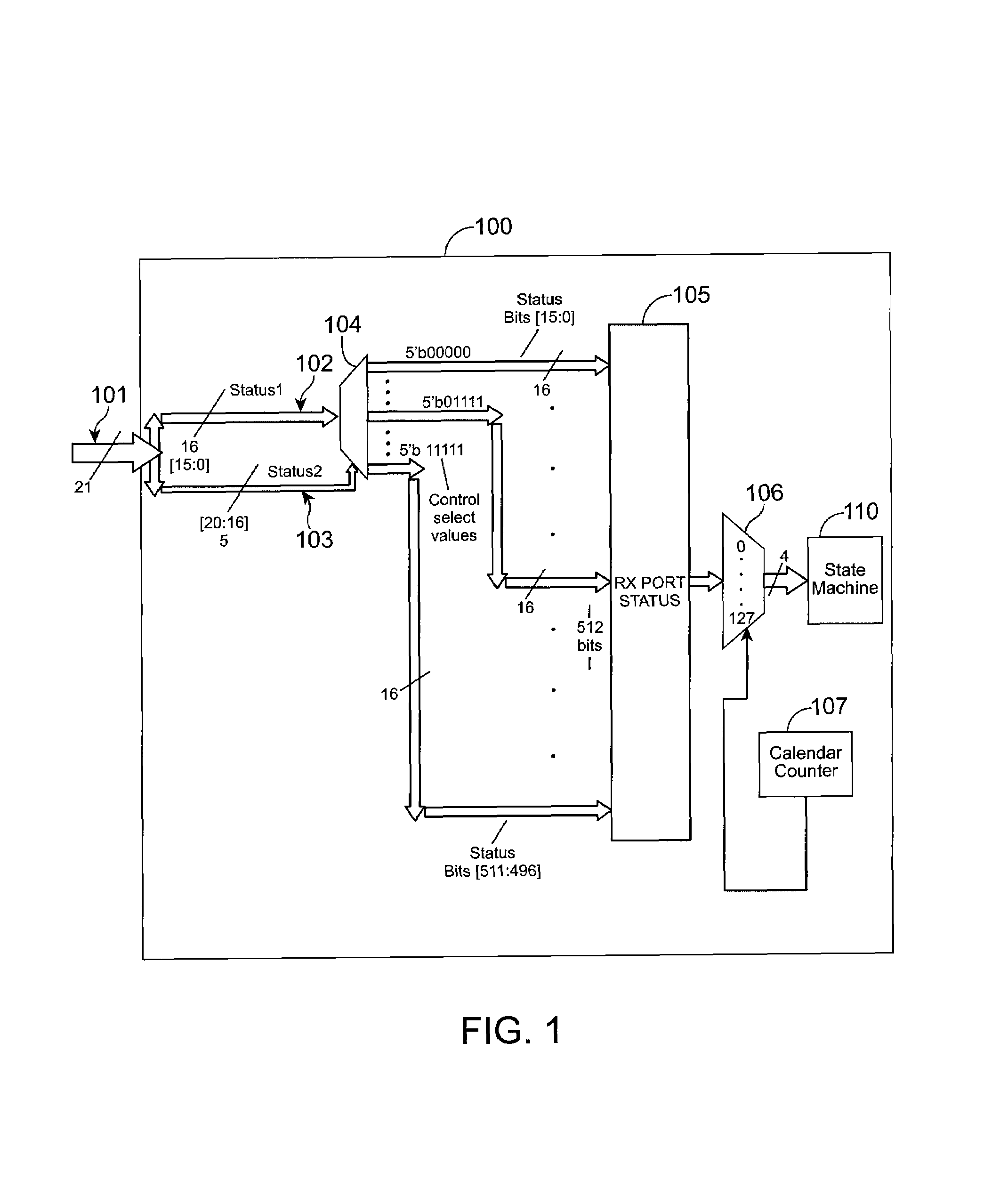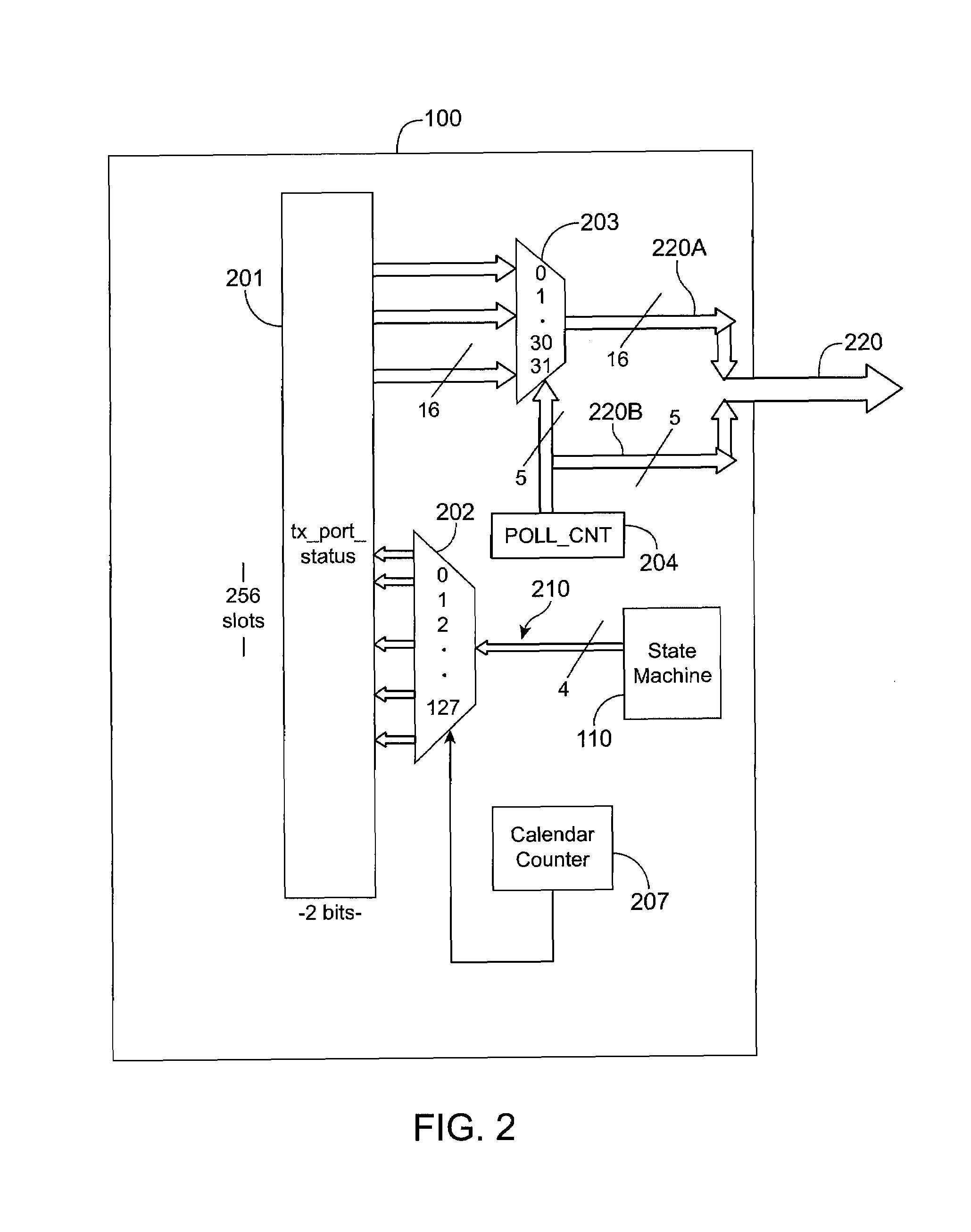Techniques for transmitting and receiving SPI4.2 status signals using a hard intellectual property block
a technology of status signals and intellectual property blocks, applied in digital transmission, data switching networks, instruments, etc., can solve the problems of not making economic sense to design and mass produce an asic for a low-volume communication system, and achieve the effect of reducing the number of input and output ports
- Summary
- Abstract
- Description
- Claims
- Application Information
AI Technical Summary
Benefits of technology
Problems solved by technology
Method used
Image
Examples
Embodiment Construction
[0017]The techniques of the present invention provide a system for relaying FIFO status information to the user extracted from a SPI4.2 status channel from a SPI4.2 HIP block. The techniques of the present invention also provide a system for receiving FIFO status information from the user to be processed in a SPI4.2 HIP block before transmission on the SPI4.2 status channel. Implementing a SPI4.2 interface on an application specific HIP block substantially reduces the amount wires and logic circuits needed to implement the various SPI4.2 functions. Also, a SPI4.2 HIP block of the present invention requires less input and output ports to transmit and receive FIFO status signals.
[0018]As discussed above, a SPI4.2 compatible interface can support a maximum of 256 ports. However, it would be cumbersome to provide 512 I / O ports (256*2 status bits) on a HIP block in order to support FIFO status information for 256 ports. HIP blocks typically have a limited number of input and output ports...
PUM
 Login to View More
Login to View More Abstract
Description
Claims
Application Information
 Login to View More
Login to View More - R&D
- Intellectual Property
- Life Sciences
- Materials
- Tech Scout
- Unparalleled Data Quality
- Higher Quality Content
- 60% Fewer Hallucinations
Browse by: Latest US Patents, China's latest patents, Technical Efficacy Thesaurus, Application Domain, Technology Topic, Popular Technical Reports.
© 2025 PatSnap. All rights reserved.Legal|Privacy policy|Modern Slavery Act Transparency Statement|Sitemap|About US| Contact US: help@patsnap.com



